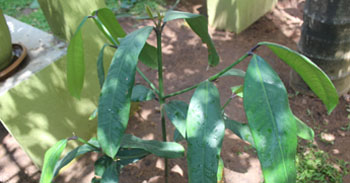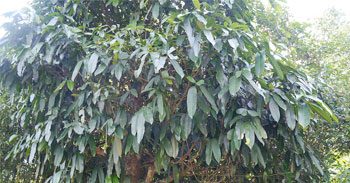KJC Medicinal Garden
Yellow Mangosteen
Garcinia xanthochymus
Order: Malpighiales
Family: Clusiaceae
Genus: Garcinia
Species: G. Xanthochymus
Common Names: Mundu
Native to India, Southern China, and Japan through Indochina to Peninsular Malaysia
Other plants of the same genus with medicinal properties
-
Biwaldia Scop
Brindonia Thouars
Cambogia L
Coddampulli Adans
Discostigma Hassk
- The genus Garcinia has over 200 species distributed in the tropics of the world
- The fruits are a food source for several animals, such as the archduke butterflies
- Many species are threatened by habitat destruction, and at least one species, G. cadelliana, from South Andaman Island, is almost or even completely extinct already
Uses in Tradition systems of medicine
- Garcinia xanthochymus has been widely used in traditional Chinese medicine for expelling worms and removing food toxins
- They are linked to the pathology of cirrhosis, cancer, and neurodegenerative diseases
- Neurodegenerative diseases
- The fruit of G. xanthochymus is nutrient rich containing primary metabolites such as carbohydrates, protein and fats, as well as vitamins and minerals such as sodium,
potassium, calcium, iron, Phosphorus, magnesium, thiamine,
riboflavin, niacin, ascorbic acid, and vitamin B12
Suggested Medicinal Properties
- Medicinal Properties contains xanthones, benzophenones, flavonoids, isocoumarins and depsidones
- Antidiabetic, antioxidant, nerve growth factor, cytotoxicity and antimicrobial
- Seeds of Garcinia xanthochymus contain 2.35g ash, 6.93g protein, 45.22g carbohydrate, 12.3g crude fiber, and saturated and unsaturated fatty acids at 34.17% and 65.79%, respectively. Seed oil was composed of nine major fatty acids including myristic acid (0.11%), palmitic acid (32.96%), stearic acid (0.96%), palmitoleic acid (17.65%), oleic acid (45.87%), linoleic acid (1.93%), linolenic acid (0.34%), arachidic acid (0.07%), and behenic acid (0.07%). The oil demonstrated antimicrobial activity against gram-positive bacteria. Antioxidant activities of oil were evaluated using α,α-diphenyl-β-picrylhdrazyl reduction activities, and it was higher than that of ascorbic acid and butylated hydroxyanisole (IC50 = 120 μg.mL−1)
Active Phytochemicals
References
Kunle OF, Egharevba HO, Ahmadu PO. “Standardization of herbal medicines - A review.” International Journal of Biodiversity and Conservation vol 4(3) (2012): 101-112. DOI: 10.5897/IJBC11.163
Shameer PS, Rameshkumar KB, Mohanan N. “Diversity of garcinia in the Western Ghats: Phytochemical Perspective.” Jawaharlal Nehru Tropical Botanic Garden and Research Institute,India. 2016, 1–18

